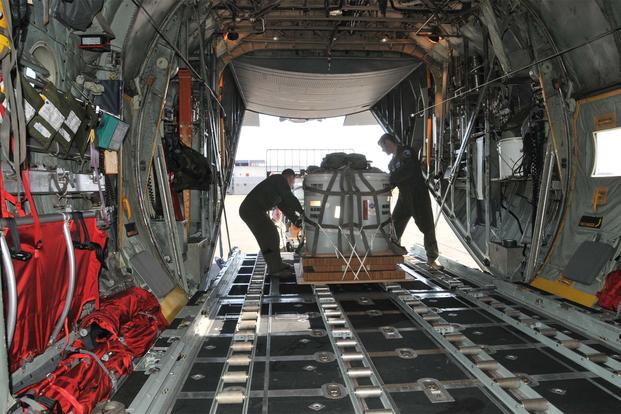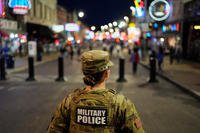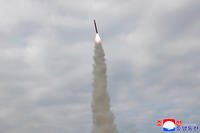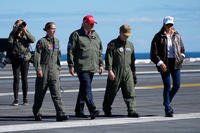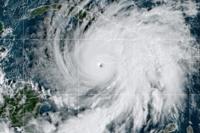The U.S. Air Force is increasing its flight incentive pay and aviation bonus programs -- and even asking retirees to come back into the service -- to deal with an ongoing pilot shortage.
Air Force Secretary Heather Wilson announced on Friday the service will increase its aircrew incentive pay, also known as flight pay, for the first time since 1999.
Effective Oct. 1, aircrew officers will receive up to $1,000 a month, up from $840, and enlisted aircrew members will receive up to $600 a month, up from $400, Wilson said during a briefing at the Pentagon.
Related content:
- Air Force Gets Creative to Tackle Pilot Shortage
- New Bonus: $455K Over 13 Years for Air Force Fighter Pilots
- US Military, Airline Officials to Discuss Pilot Shortage
- How Many Fighter Jets Does the Air Force Need?
This applies to such jobs as boom operators, flight engineers, loadmasters, airborne mission systems airmen, flight attendants, even enlisted remotely piloted aircraft airmen flying the RQ-4 Global Hawk, Air Force spokeswoman Brooke Brzozowske told Military.com.
The incentive pay is also determined by years of service. For example, officers between 12 and 22 years of service are eligible for up to $1,000; enlisted members with more than 14 years are eligible for $600. On the lower end, enlisted members with four years or less are only eligible for $225 while officers with two years or less can only receive $150.
"The second major thing we're doing is expanding the aviation bonus program," Wilson said. "It will include those who are not under a service contract currently, those who've never signed a bonus, and those whose contract may have expired. That [incentive] begins this month."
The service chose to extend the program because "take rates were lower than what the Air Force needs," Brzozowske said. "We're expanding the people who are eligible."
The move is meant to target a bigger pool of candidates who haven't signed the bonus contracts, previously declined them, or whose previous contracts expired.
In June, the Air Force announced the new Aviation Bonus Program -- an expansion of Aviator Retention Pay -- and changed it to a tiered bonus system with amounts, for example, of up to $455,000 over 13 years for fighter pilots.
The system was authorized under the 2017 National Defense Authorization Act, or NDAA, and detailed for the first time the "tiered" benefit, with levels based on specialty area to target aviators across a number of platforms, including drones.
Lastly, the final major initiative the Air Force will try is to attempt to bring back retired aviators, known as a voluntary rated return. But, Wilson said, the retired pilots will only fill 25 open, critical-rated staff positions.
"We have a number of positions around the Air Force that require the expertise of someone who has been a military pilot and [we] would like to be able to keep our pilots who are current in the aircraft in the aircraft and try to fill some of these vital flight slots," Wilson said.
The program is open to all pilot 11X Air Force Specialty Codes, Brzozowske said. Former airmen can apply for the program, which began Aug. 11, through the Air Force Personnel Center.
VRRAD will only serve as a "12-month contract," the secretary said. It's to say, "Come on back to active-duty, give us another year of service in a staff job," she said.
In addition, Wilson said the aircrew crisis task force, set up by the Pentagon last year, has been elevated in authority and will now be led by a one star.
Brig. Gen. Mike Koscheski has been assigned to lead the task force, which advances "the leadership of this task force to a general officer, who will be focused... on retaining and growing pilots in order to address the shortfall."
Koscheski was previously the chief of strategic planning and integration for the Air Force's deputy chief of staff for strategic plans and requirements, according to the Defense Department.
The bulk of initiatives are hitting at a time when the Air Force is suffering large losses to the commercial aviation industry.
"The hiring of [military pilots] is going on at a very high rate at the airlines, so we've been focused on this," Wilson said.
Regardless, Wilson and Chief of Staff Gen. David Goldfein have said the service was 1,555 pilots short by fiscal 2016, which includes 1,211 total force fighter pilots.
The deficit is expected to grow.
-- Oriana Pawlyk can be reached at oriana.pawlyk@military.com. Follow her on Twitter at @Oriana0214.
